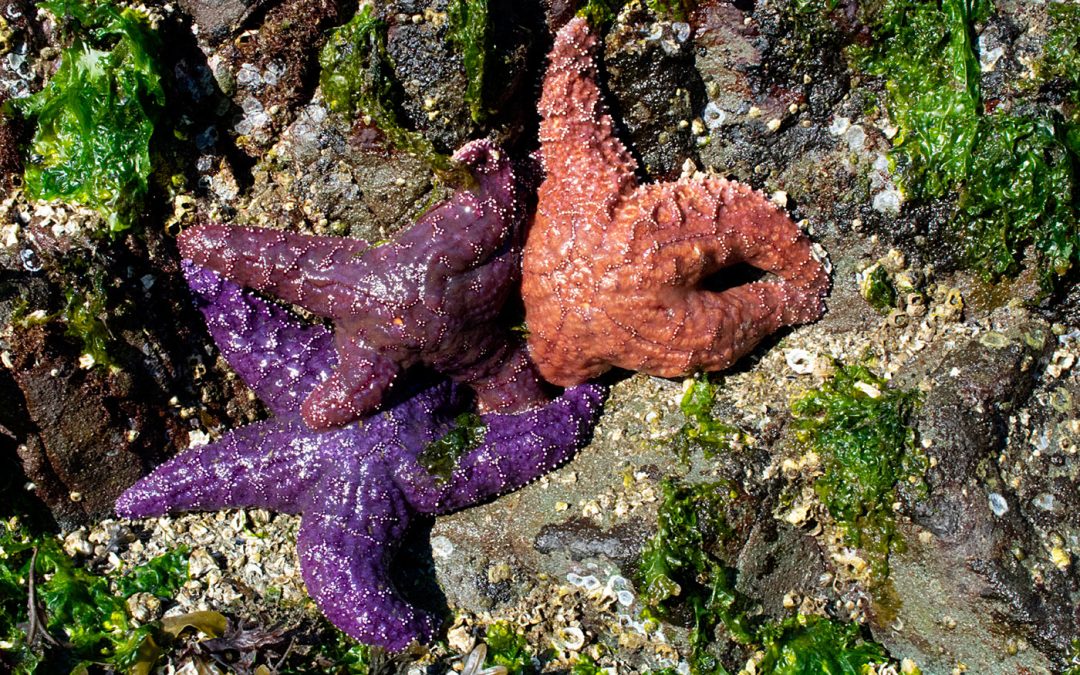
by David Young | Aug 15, 2024 | Echinoderms
Author: Jessica Dillon Photos by D. Young Common Names: Purple Sea Star, Ochre Sea Star, Purple Ochre Sea Star Scientific Name: Pisaster ochraceus Size Range: Diameter is approximately 25-30 cm. Identifying Features: Purple Sea Stars also known as Ochre Sea...
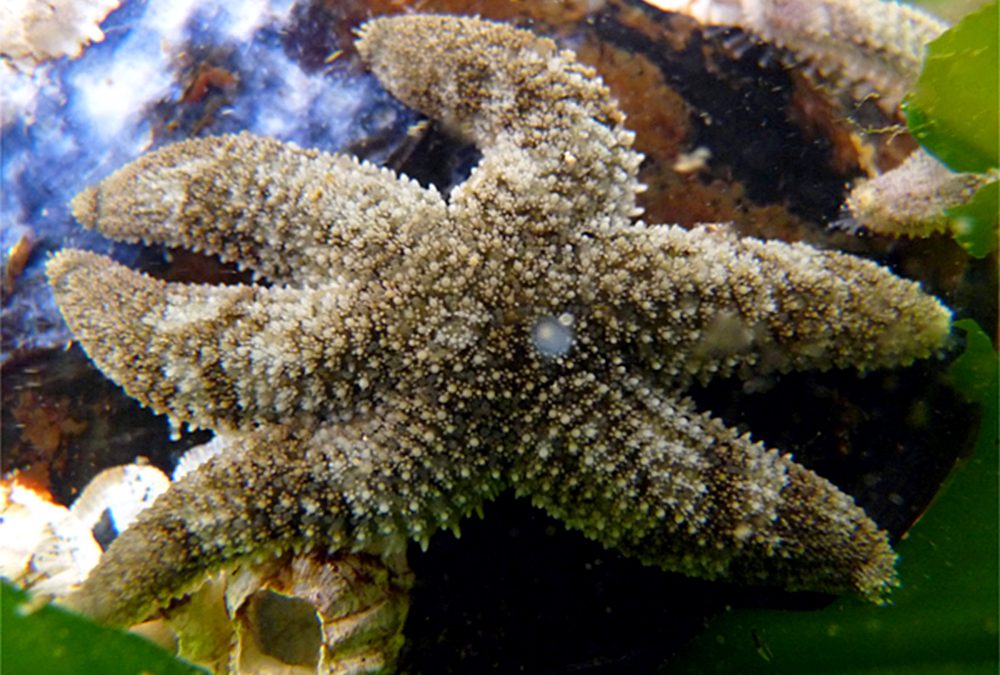
by David Young | Aug 15, 2024 | Echinoderms
Author: Anna Chhina Common Name: Six Rayed Star, Six Armed Sea Star, Scientific Name: Leptasterias hexactis Size Range: 5-9 cm (aprox. 2″) Identifying Features: The Six Rayed Sea Star is often green, black, brown, red, and sometimes a more mottled color. It is...
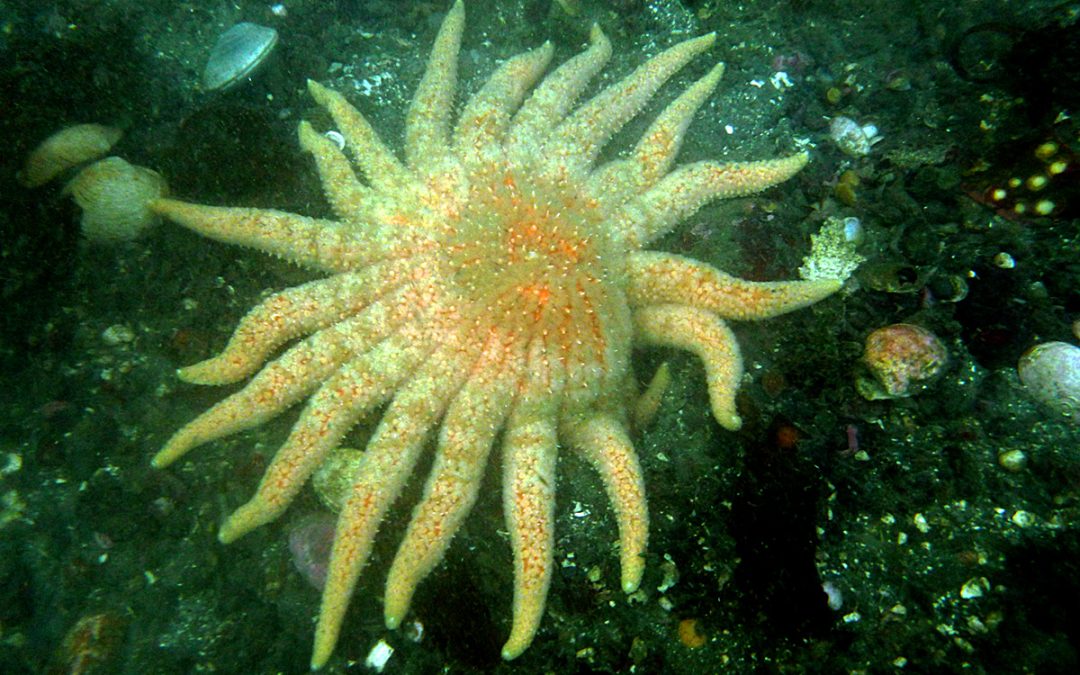
by David Young | Aug 15, 2024 | Echinoderms
Author: Allie Graff Size range: Generally 1 m (about 39 inches) across but sometimes larger. Identifying Features: The Sunflower Star is the largest sea star in the world, and is also known as one of the fastest. Its speedy movements are courtesy of the fast-moving...
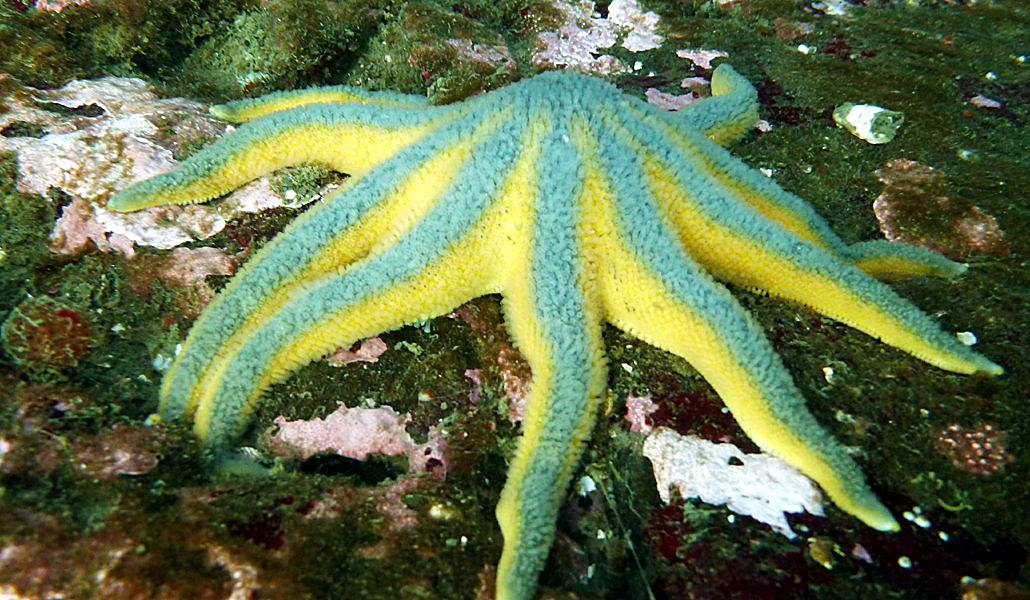
by David Young | Aug 15, 2024 | Echinoderms
Author: Kaylan Guidon Scientific name: Solaster stimpsoni Size range: 50 cm (20 inches) across Photos by D. Young Identifying features: This species can be identified by the dark blue to blue-purple stripes that radiate from the centre to the tips of the arms....
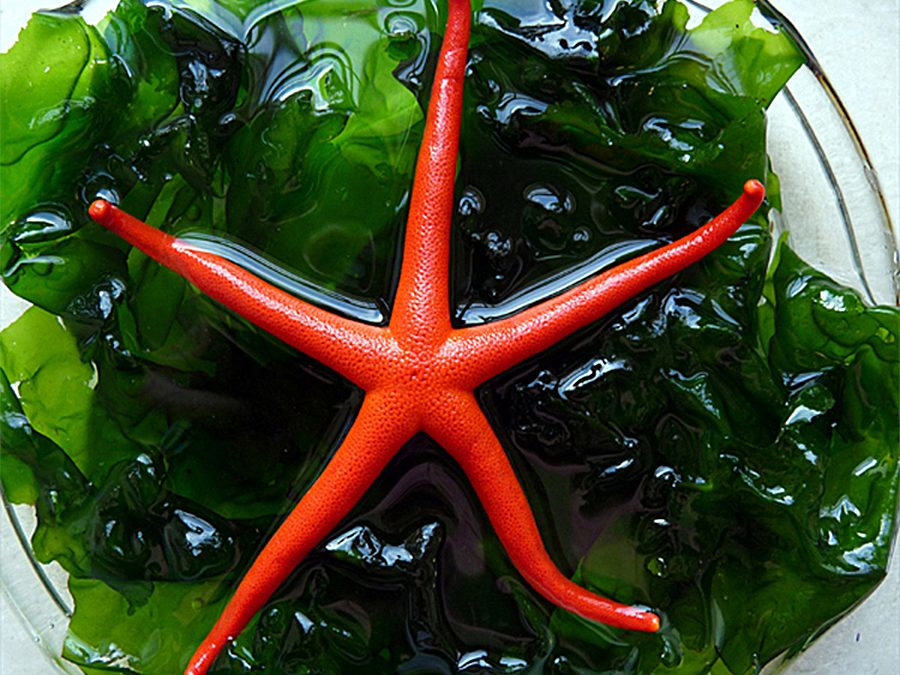
by David Young | Aug 14, 2024 | Echinoderms
Common Names: Blood Star, Pacific Blood Star, Blood Starfish Author: Abigail Hodson Scientific Name: Henricia leviuscula Size Range: 10-12 cm (3.9-4.7 inches). Identifying Features: The pacific blood star is typically red-orange in colour, but colours may vary...
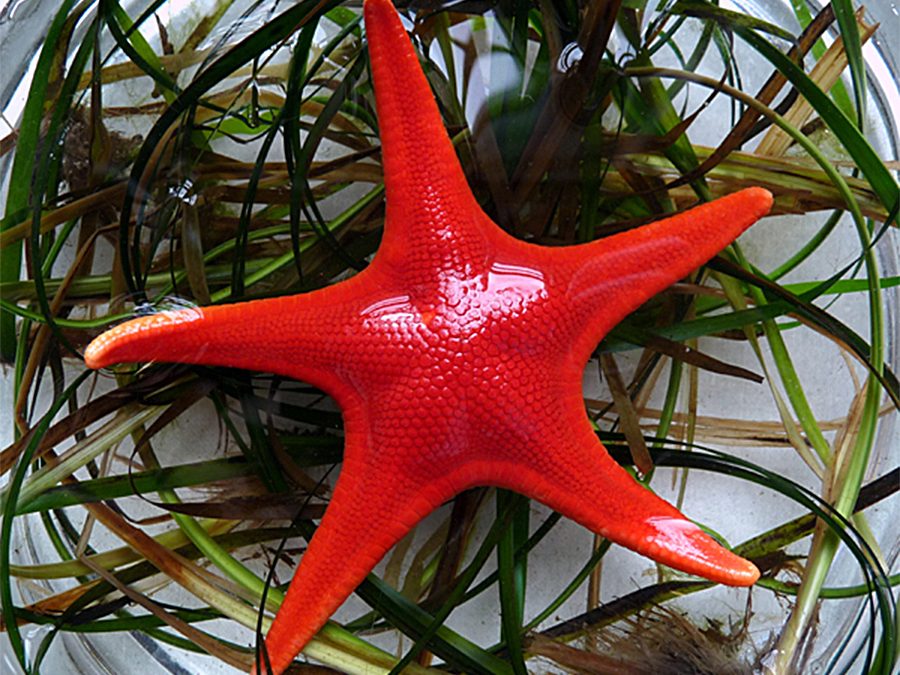
by David Young | Aug 14, 2024 | Echinoderms
Author: Yunfei Gong Common name: Vermillion star Scientific name: Mediaster aequalis Size range: 5 inches Identifying features: Mediaster aequalis is one of the smallest sea stars ranging in size from three to seven inches. It is a red, 5 armed (rarely,4 to...






